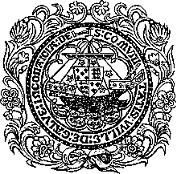GALWAY TOWN
GALWAY, a sea-port, borough, and market-town, and a county of itself, locally between the baronies of CLARE, DUNKELLIN, and MOYCULLIN, county of GALWAY, and province of CONNAUGHT, 51 ¼ miles (N. N. W.) from Limerick, and 101 ¼ (W. by S.) from Dublin, on the bay of Galway; containing 33,120 inhabitants.
and province of CONNAUGHT, 51 ¼ miles (N. N. W.) from Limerick, and 101 ¼ (W. by S.) from Dublin, on the bay of Galway; containing 33,120 inhabitants.
Though few particulars of its early history are recorded, this place appears to have been regarded from a very remote period as a position of great importance. In the first division of Ireland, ascribed to Partholan, it was one of the chief points of partition; and in the subsequent division of the island between Heber and Heremon, adopted by Conn of the Hundred Battles and Eogan, King of Munster, it was fixed upon as the western termination of that line of demarcation, of which Dublin was the eastern extremity. There is every reason for supposing it to be identical with the Nagnata, or Naguata, of Ptolemy, described as the principal city on the western coast. Baxter adopts this opinion, from its original name, "Cuan-na-guactie, " signifying in the Irish language "the port of the small islands," descriptive of its situation both with respect to the isles of Arran at the mouth of the bay, and to the smaller islets in the more immediate vicinity of the town.
The power of the Danes having been destroyed by the decisive battle of Clontarf, the people of the surrounding district, aware of the importance of its situation, erected a strong castle for its defence; which so powerfully excited the jealousy of the people of Munster, that Conor, king of that province, in 1132, despatched a body of troops and levelled it with the ground. In 1149, the town and castle, the latter of which had been restored, were taken and destroyed by Turlough O'Brien, King of Munster; but they appear to have soon revived, for, in 1154, the ships of "Galway Dune" were sent to the northern part of the island; and it is recorded that, in 1161, strange ships were seen in the harbour, and that the town took fire; the Annals of Innisfallen notice also another conflagration, in 1170.
At the time of the English invasion, the town contained only a few families and some fishermen under the protection of the O'Flahertys, who then held the castle and the surrounding territory. The first notice of it that occurs after that event is the return of Feidlim O'Conor, King of Connaught, from the English court, whither he had gone to lay before the English monarch his complaints against Richard de Burgo. Hugh O'Flaherty, embracing the cause of Feidlim, fortified the castle of Galway, and in 1230 baffled every attempt of De Burgo to dispossess him; but on the defeat of Feidlim, about two years after, the town and castle fell into the hands of De Burgo, who, though he lost them again for a short time, ultimately recovered them, and made this place his principal residence and the capital of the province; he secured it with additional fortifications, and established a municipal government under a magistrate of his own appointment.
In 1270, the erection of walls for the defence of the town was commenced, and continued at intervals, by grants for that purpose, till the end of that century, when they were completed. The increased security of the place encouraged the influx of strangers, among whom was a number of new settlers, consisting of 13, or according to some, 14 families, known under the appellation of the "tribes of Galway," who enriched themselves by commerce and the purchase of lands.
Galway Town | Galway Town History | Galway Town Commerce | Galway Town Government | Galway Town Geology | Galway Seats | Galway Diocese | Galway, County of
